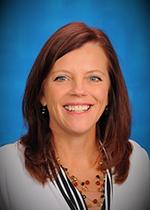The Coeur d’Alene School District had one of the state’s highest college “go-on” rates in 2016.
But Trina Caudle already has her eyes on the next round of numbers. She hopes the district’s new college and career counselors will help even more graduates prepare for life after high school graduation.

“I would like to be (at) 80 percent,” said Caudle, the district’s director of secondary education.
For now, Coeur d’Alene’s go-on rate sits at 62 percent — the highest among Idaho’s largest school districts, and well above the statewide rate of 48 percent.
The latest go-on numbers, released by the State Board of Education Monday, provide a window into Idaho’s continuing efforts to increase college enrollment. Idaho’s college graduation numbers remain among the lowest in the nation — much to the chagrin of many of the state’s education, political and business leaders.
In that context, any change in the numbers will draw close attention. And at 48 percent, the 2016 go-on rate represents an improvement from a year ago, when a snapshot look at the class of 2015 yielded a 46 percent rate.
The State Board also released go-on rates for school districts and charter schools Monday. The numbers aren’t complete. The State Board redacted some numbers from small districts and charters, in order to protect student privacy. So there’s no way of saying which district or charter had the state’s highest go-on rate, or its lowest rates.
But the numbers did reinforce some traditional patterns.
A few perennial high-achieving charter schools ranked near the top. Meridian’s Compass Public Charter School, the Coeur d’Alene Charter Academy and Eagle’s North Star Charter School all had go-on rates exceeding 70 percent. In April, these three charter schools recorded some of Idaho’s highest scores on the SAT, the state’s college-entrance exam of choice.
The Canyon Owyhee School Service Agency, a cooperative alternative high school, recorded one of the state’s lowest go-on rate. So did Another Choice Virtual School, an online charter school that often takes on at-risk students.
Among the larger districts, socioeconomics also played a familiar role. Wealthier districts, such as Coeur d’Alene and West Ada, fared better than districts with higher poverty rates, such as Nampa and Vallivue. Bonneville School District’s go-on rate trailed the state average — but Eastern Idaho college enrollment numbers tend to lag, as many high school graduates opt to go on Mormon Church missions while putting college on hold.
Coeur d’Alene has a few built-in advantages. The nearby North Idaho College campus allows the district to partner not just with the hometown community college, but several other Idaho universities. Coeur d’Alene has career-technical education partnerships with the nearby Post Falls and Lakeland school districts. Caudle also says the community is a factor; parents expect a lot from their children, and from the district.
Looking into the future, Caudle hopes to see dividends from one of the state’s high-profile investments in college preparation. The 2016 Legislature put $5 million into hiring additional college and career counselors, and the 2017 Legislature increased this line item to $7 million.
Coeur d’Alene’s new high school counselors are expected to meet one-on-one with every student in the district — no small task, when 1,700 students attend Lake City High School and 1,500 students attend Coeur d’Alene High School. The district is pushing its counseling into its middle schools. Students get help drawing up a four-year plan for high school — to help them make the best use of the $4,125 of state money that they can spend on dual-credit courses, Advanced Placement exams or other programs designed to prepare students for college.
Some perspective, and some more high achievers
Idaho’s signature education effort is its so-called “60 percent goal.” The state wants to see 60 percent of its 25- to 34-year-olds to hold some form of a postsecondary degree or certificate. In 2015, this graduation rate was only 42 percent.
The 60 percent goal and the go-on rates are not interchangeable. The first measures graduation and the former measures college enrollment right out of high school. The go-on rate doesn’t take into account students who attend college later in life — after serving a church mission or enlisting in the military, for example. And, of course, enrolling in college isn’t the same as graduating from college.
All that said, only 12 school districts and five charter high schools had a 2016 go-on rate of more than 60 percent. With 663 graduates, Coeur d’Alene is the largest district in the group. Nine of the 17 districts and charters had graduating classes of 20 or fewer students.
Taken together, these 17 districts and charters accounted for slightly less than 7 percent of the state’s 18,013 graduates.
Here’s the list of “60 percent” districts and charters: Aberdeen; Bruneau-Grand View; Butte County; Coeur d’Alene; Coeur d’Alene Charter Academy; Compass Public Charter School; Cottonwood; Fruitland; Genesee; Highland; Kendrick; Meadows Valley; Moscow; Murtaugh; North Star charter school; Sage International School of Boise; Xavier Charter School.
